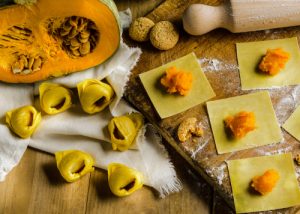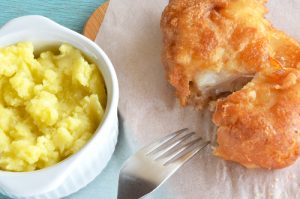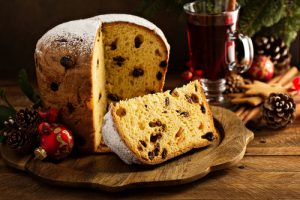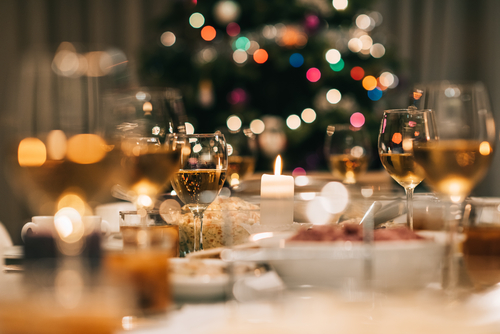How to make your guests happy with the Italian Christmas recipes and all the culinary tradition.
Christmas is certainly the most eagerly anticipated holiday of the year, and not just by the little ones who cannot wait to unwrap the gifts carefully placed under the tree.
Christmas is the moment when families get together to spend cheerful days in a festive atmosphere.
And what is the secret of the tables of all Italians, if not good food?
The Christmas dinner tradition in Italy is so vast that an encyclopedia from A to Z would not be enough to cover the variety we are talking about. And this is why today we will only touch on the habits and typical dishes that belong to the Italian Christmas which will convince you that the best vacation for you is a tour in Italy with Dragonfly.
First of all, as for every occasion, the traditions are so rooted in every corner of the Peninsula that they are very different and original from region to region.
Before sitting down at the table, you should know that the custom of honoring the Christmas Eve dinner is much more felt in southern Italy than in the north, where lunch on December 25th is given more importance.

In Southern Italy, the typical Italian recipes for Christmas Eve dinner are almost all based on fish, from the appetizers to the main courses. The next day, however, everything is allowed, but caught up in the enthusiasm of a kitchen that is filled with a thousand fragrances, most Italians prefer to serve meat dishes, (but no one turns their nose up at the leftovers from the day before!).
Italian Christmas recipes: the Most Traditional Dishes from North to South
Here’s what Italians eat at Christmas!
Let’s start with a regional overview of typical Italian Christmas recipes from some northern, central and southern regions.
Valle d’Aosta
Valle d’Aosta is famous for the marinated meats used in the preparation known as Carbonade, and for the more typical Valpellinentze soup, a special dish with contrasting flavors such as cabbage, broth, hard bread and cinnamon. So many flavors mingled in a sublime way. Is your mouth watering yet?
Veneto
In Veneto, the first course is gnocchi, and the sauce is duck, a combination that may seem atypical but is one of the cornerstones of the regional tradition. There is no lack of appetizers like the distinctive Luganega sausage, long and thin with a recognizable spiral shape and served strictly fresh, either grilled or boiled.
Emilia Romagna
The home of the tortellino, at Christmas Emilia Romagna offers its best version: the pumpkin tortello served in butter. On many of the tables the typical spaghetti dish is served with tuna and sardines, passatelli with egg and cheese and then, the king of the region that has conquered all of Italy: the cotechino of Modena.
Lazio
In Lazio, we have a simple preparation this is found nowhere else: the puntarelle. A raw vegetable that is served cold, with its typical curled shape accompanied by a dressing of anchovies, olive oil, and vinegar. A pleasure for palates who love strong flavors. Obviously, there is also Baccalà (fried cod), Minestrone soup with cabbage, and the regional lamb seared and served with oven-roasted potatoes.
Campania
What is the most famous salad that all Italians, or rather Campanians, know?
 Well obviously the insalata di rinforzo, or reinforcing salad, and if that’s its name there must be a reason! It is a side dish that colors the tables of the entire region and is rich in flavors: cauliflower, anchovies, pickled peppers, carrots, olives, capers, escarole and whatever else is on hand. In fact, many add the distinctive flavor of salted Cod to this side-dish that, in theory, simply “reinforces” the main dishes. Salted Cod, battered and fried, is another great protagonist that accompanies the dishes. In general, the distinction between the recipes of Christmas Eve and Christmas day is very marked, and because of this, the preparations for the two occasions require very elaborate menus because the guests are demanding!
Well obviously the insalata di rinforzo, or reinforcing salad, and if that’s its name there must be a reason! It is a side dish that colors the tables of the entire region and is rich in flavors: cauliflower, anchovies, pickled peppers, carrots, olives, capers, escarole and whatever else is on hand. In fact, many add the distinctive flavor of salted Cod to this side-dish that, in theory, simply “reinforces” the main dishes. Salted Cod, battered and fried, is another great protagonist that accompanies the dishes. In general, the distinction between the recipes of Christmas Eve and Christmas day is very marked, and because of this, the preparations for the two occasions require very elaborate menus because the guests are demanding!
Sicily
The warm colors of Sicily can also be found on the table at Christmas, where broths and soups leave space for succulent dishes such as the ripiddu nivicatu, a dish made with black squid ink rice, ricotta, tomatoes, and chili pepper: a nice reproduction of Mount Etna in scale. Baccalà, from north to south, crosses all regional borders and is also found here, but strictly in the fried version.
The Dessert at the End of the Meal is called Panettone
If there is something that brings Christmas to the table then that is the king of sweets: the Panettone.
Obviously, it is not the only sweet note that closes the meal but it has certainly been the symbol of the Christmas season for centuries. The recipe for the Christmas cake par excellence is not a secret but it is time-consuming.
 There are legends about its origins, as in all things handed down from generation to generation. The most popular story tells of a convivial banquet at the home of Ludovico il Moro. Ludovico had ordered his cook to prepare a royal feast for his noble guests with a sweet finale, but the dessert was accidentally burned. The kitchen steward, Toni, offered the preparation of bread, eggs, sugar and raisins that he had set aside for his Christmas. The result among the diners was a success, and that is how “pan del Ton”, literally the Bread of Toni, was born, its name slowly changing to what we know today as Panettone, which nowadays is possible to find in endless variations, for all tastes. And from north to south it is found on all the tables.
There are legends about its origins, as in all things handed down from generation to generation. The most popular story tells of a convivial banquet at the home of Ludovico il Moro. Ludovico had ordered his cook to prepare a royal feast for his noble guests with a sweet finale, but the dessert was accidentally burned. The kitchen steward, Toni, offered the preparation of bread, eggs, sugar and raisins that he had set aside for his Christmas. The result among the diners was a success, and that is how “pan del Ton”, literally the Bread of Toni, was born, its name slowly changing to what we know today as Panettone, which nowadays is possible to find in endless variations, for all tastes. And from north to south it is found on all the tables.

